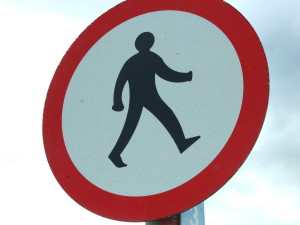Walking is a great exercise for all fitness levels. First of all it’s weight bearing which helps build strong bones, and is great cardiovascular exercise (at the right intensity) improving cardiovascular health and reducing stress, blood pressure & insulin resistance. Plus walking will help improve your mood, quality of sleep and burn kilojoules, helping you maintain a healthy weight. Talk about multi tasking on your walk. Of course as a runner myself, the temptation is to start singing the praises of increasing the pace & running, but there is so much walking offers to new starters or those less fit that it really is a great place to start for those who aren’t ready to run.
The huge range of health benefits listed above can all be gained from just 30mins of walking at a moderate pace. Added to all this the social element of walking is great bonus. Most people can get out for a wander & have a chat as they gain they health benefits & social benefits of spending time with friends or family.
Walking is also very versatile. A key element to gaining the most from cardiovascular exercise such as walking is to increase the intensity. Moderate to intense exercise (65%-80% of your max heart rate) is challenging enough to have you out of breath & unable to hold a full conversation without having you gasping for air. At this level your heart & lungs work harder to deliver oxygen to working muscles in the body & the fitness improvements are greater.
How can walking be challenging enough to help improve your fitness?
- Hills & stairs. Head for the steep terrain and climb stairs or walk up hills at a brisk pace to turn your walk into an interval session.
- Use a pedometer to track your distance and total steps. Aim to gradually increase your weekly totals as you become fitter.
- Faster walk intervals. On a flat walking route up your pace for faster intervals. Try 2-4mins fast with moderate walking between
- Run/walk intervals. Dare I say it, add in a running intervals to increase the intensity. Start with 1min of running & 5mins of walking & gradually increase the length of the running intervals as your fitness increases.

- Combining walking with strength training. Turn your walk into a strength circuit by adding in strength exercises. Endless variations of exercises could be added but for the best results choose movements that use big muscles and involve multiple joints, such as lunges, squats, pull ups or step ups.
How to cheat on your walking program
No, we don’t want you to cut corners, but if you know what not to do you’ll be aware of the traps that sometimes sabotage the best intentions.
- Dawdle. A slow pace will still qualify as a walk but as your mums said, ‘you’re only cheating yourself!’ 30mins of slow walking could burn only ½ the kilojoules and not provide the cardiovascular fitness benefits to help you go further & faster.
- Don’t go. As with most exercise consistency is key. No matter how challenging 1 session is if you’re not walking regularly (3+ times/week) you’re not maximising the fitness benefits
- Cram. Don’t have a week or 2 off & then try to ‘catch up’ with intense exercise or back to back workouts. Allow recovery time between more intense sessions and as mentioned above consistency is key.
Now you’ve got the inside info on how to get the most from your walking (& avoid the cheats/traps) get out there & enjoy the scenery. Take a friend & do something good for yourself & friends & family.
walking will help improve your mood, quality of sleep and burn kilojoules, helping you maintain a healthy weight



Speak Your Mind